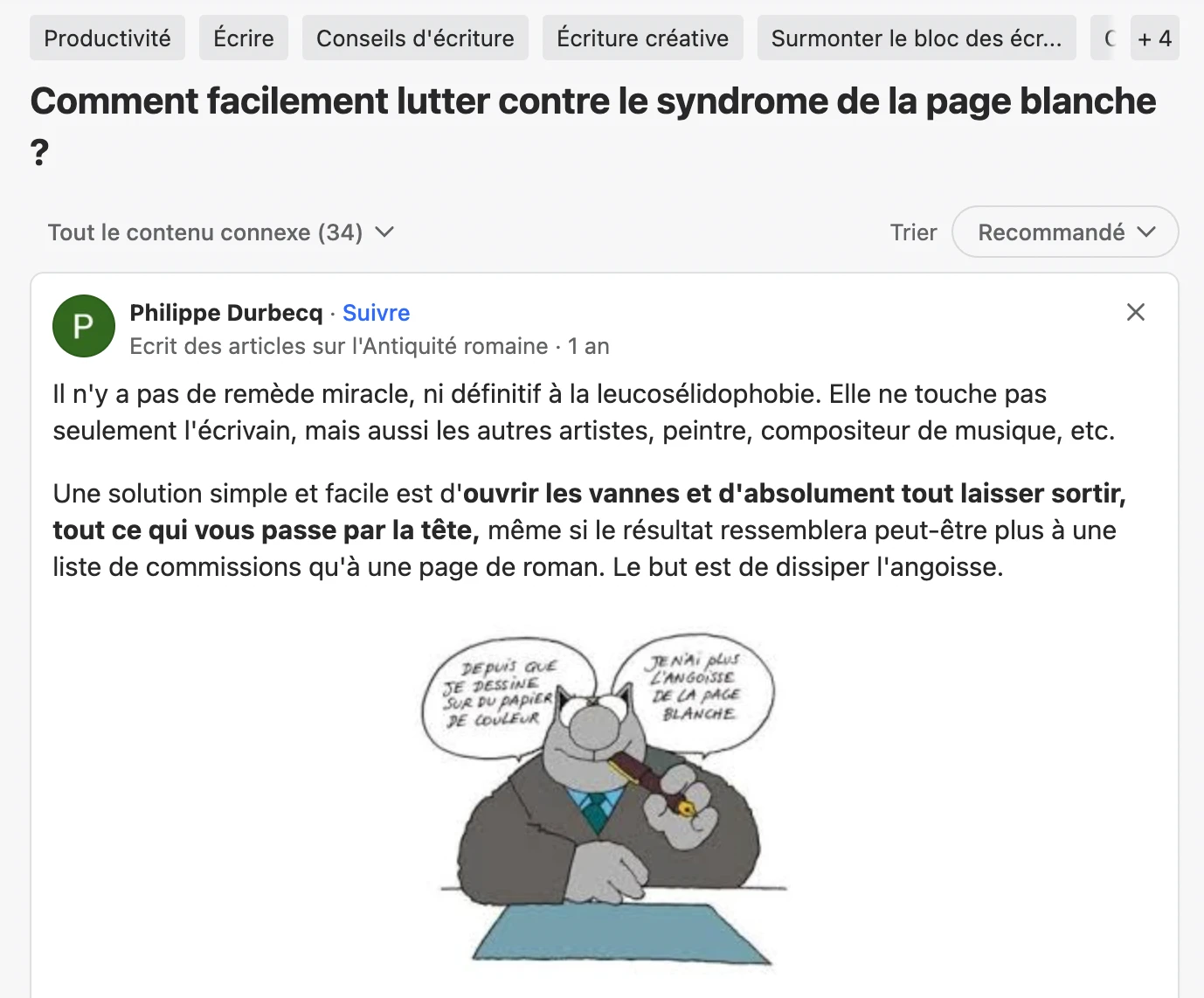5 unlikely places to find content ideas (that aren’t LinkedIn or ChatGPT)
Tired of the same content ideas coming from the same places? Discover 5 unexpected ways to find fresh inspiration and give it your unique spin.
Written by Lucie Simonova

Tired of the same content ideas coming from the same places? Discover 5 unexpected ways to find fresh inspiration and give it your unique spin.
Written by Lucie Simonova

Many of us turn to the same places when we’re short on content ideas—LinkedIn, ChatGPT, Pinterest, maybe a few marketing blogs. And while those sources can help, they can lead to the same recycled topics showing up everywhere.
If you want your content to stand out, you need to look in less obvious places. The good news is that inspiration is everywhere, hiding in corners people usually don’t bother checking.
In this post, we’ll walk you through 5 unlikely spots where you can dig up fresh content ideas and give them your own spin.
One of the easiest ways to find fresh ideas is to step outside your own language bubble. Blogs, news sites, and even social channels in other countries often cover topics that haven’t made it into your market yet. By keeping an eye on them, you can spot trends early and bring a new angle to your audience.
It’s about noticing what people in other places are already talking about, then reshaping it so it makes sense for your readers. For example, a French tech blog might be discussing a new approach to managing digital content. By the time that topic starts showing up in English, you could already have a thoughtful piece published, giving you a head start.
Why it works:
Take the Spanish blog below as an example: “¿Por qué nadie lee tu blog? 20 razones y soluciones.” (Translation: “Why does no one read your blog? 20 reasons and solutions.”). That’s a strong, practical title that hits a real problem content creators can face. If you get inspired by the idea, adapt it for your own audience and add your perspective, you get a strong new piece.

Quora has active communities in Spanish, French, German, Japanese, and plenty of other languages. Every day, people ask thousands of questions, and those questions can be a goldmine for content ideas.
The value here is simple: questions show you what people actually care about. When you browse in another language, you’ll see pain points and curiosities that your local competitors might not be paying attention to.
Imagine finding a German Quora thread where people ask, “How do I cook healthy meals when I only have 20 minutes a day?” That could inspire content on time-saving habits, efficiency hacks, or productivity, adapted to your own field.
Below is another example from French Quora: “Comment facilement lutter contre le syndrome de la page blanche ?” (How to fight writer’s block easily?). You can use it in two ways:

Why it works:
One of the simplest ways to spark ideas is to look at titles from completely different niches—cooking, gaming, fitness, DIY, you name it. These titles are already designed to grab attention and make people curious, which is exactly what you want in your own content.
The trick is to reframe them for your field. For example, a cooking video titled “5 ingredients you always forget” could turn into a blog post titled “5 marketing tools you always overlook.” It’s the same structure but tailored to a different audience.
Another good example is the YouTube title below: “This morning routine is scientifically proven to make you limitless.” Let’s say you are thinking about crafting a piece on writing headlines that work. You can take the YouTube title as it’s punchy, a little dramatic, and instantly promises value, and swap in themes that fit your audience. The new title can be something like: “These headline formulas are scientifically proven to grab attention.”

This approach isn’t limited to YouTube. Newsletters, podcasts, and magazine headlines in other industries are full of catchy, proven formats. Scan them for patterns, then adapt the structure or angle for your own niche. It’s a fast way to generate ideas that feel fresh without starting from scratch.
Why it works:
Amazon reviews, Goodreads reviews, app store reviews...people pour out their thoughts in these spaces, often in way more detail than you’d expect. And while they’re usually talking about books, gadgets, or apps, the themes that come up are often universal.
That’s what makes reviews such a good source of inspiration. They reveal real frustrations, wishes, and sometimes even unexpected use cases. When you look past the specific product, you’ll notice patterns that apply to almost any field.
Here are a few common complaints you’ll spot again and again, and how you could spin them into content:
As an example, you can take the Amazon review of a coffee machine below. That review highlights a clear pain point: bad customer service. Teams can spin it into a new article by focusing on the pain point of bad customer service and the broader lessons it implies. Here are a few possible angles:

Why it works:
Even in a digital-first world, newspapers, magazines, and books are still full of ideas waiting to be adapted for online content. Headlines, feature stories, interviews, and even the way an article is structured can spark topics, angles, or formats you wouldn’t find on a website or social feed.
For example:
The key is to look for evergreen content ideas, clever phrasing, or unique ways of presenting information. Even if the source is print, the insights can easily be adapted for your audience online.
By looking in unlikely places, you can uncover a steady stream of fresh ideas your competitors might be missing. When you notice where people share questions, frustrations, and interests, you can take those insights and give them your own unique spin.
If you want to keep the ideas coming, we’ve got a couple of other resources that can help you come up with new content ideas and spark creativity:

What if we told you there was a way to make your website a place that will always be relevant, no matter the season or the year? Two words—evergreen content. What does evergreen mean in marketing, and how do you make evergreen content? Let’s dive into it.
Lucie Simonova

How can you create a cohesive experience for customers no matter what channel they’re on or what device they’re using? The answer is going omnichannel.
Zaneta Styblova

To structure a blog post, start with a strong headline, write a clear introduction, and break content into short paragraphs. Use descriptive subheadings, add visuals, and format for easy scanning. Don’t forget about linking and filling out the metadata. Want to go into more detail? Dive into this blog.
Lucie Simonova